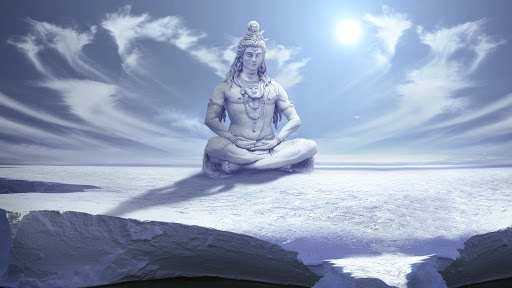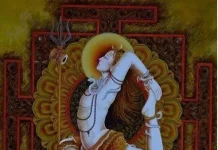We follow an ancient tradition of Shiva Ayurveda connected to the Himalayan domain of Shiva and the great Yogis, including Yoga traditions from Kashmir to Uttar Khand and Nepal, but with connections throughout India.
By Vamadeva Shastri
Most Ayurvedic practitioners look upon Lord Dhanvantari, an incarnation of Lord Vishnu, as the deity of Ayurveda and ideal doctor. Certainly that is an important tradition worthy of following on many levels, based on profound Puranic stories and symbolism.
Yet in the Rigveda, the oldest Vedic text, and Shruti or book of mantric vision of the Rishis, the primary doctor and healer is Rudra, the main Vedic name for Shiva. Rudra is lauded in the Rigveda as the supreme doctor (bhishaktamam tva bhishajam shrinomi). In the famous Rudram chant of the Yajurveda, in which the mantra Namah Shivaya first occurs, Rudra is the personification of the healing ritual (Yajna) that grants wellbeing and longevity (Ayu), freedom from disease and death.
Rudra and Agni
Vedic Rudra is connected with Agni who purifies body and mind and removes toxins and poisons, specifically his form as Agni Pavaka, Agni the purifier. This means we can generally identify Rudra with Agni, who is widely lauded on many levels through the Vedas, starting with the first of its hymns. The Vedic Yajna and fire ritual includes healing practices and powers, extending to its sacred ash (bhasma). Shaivite traditions have their own special havans for Agni, and many Shaivite sadhus maintain a daily or ongoing fire. Some cover their bodies with this bhasma The Shiva-Agni connection remains enduring today.
Rudra means the maker of sound and thunder, associating Rudra/Shiva with OM and the Sanskrit alphabet. The mantric side of Rudra is very important and sets all the Vayus, Maruts or Rudras in motion in the forces of nature. Agni also rules over speech (Vak). Rudra/Shiva is the source of healing sounds and mantras.
In addition, Vedic Rudra is associated with Indra, the cosmic power of Vayu and Vata, who governs the lightening force in the atmosphere and is also sometimes identified with OM. While Rudra is the thunder form, Indra is the lightning form, which two always go together. Even at a higher level beyond the elements, space, light and sound reflect one another.
Rudra and Soma
Vedic Rudra is a dual deity with Soma, as Rudra-Soma. Rudra as the Agni form is purification and watery Soma form with rejuvenation, the two main sides of the healing process. The entire universe is Agni-Somatmakam, of the nature of Agni and Soma, which is the nature of Shiva.
There are more specific hymns to Soma in the Rigveda than to Rudra. The entire ninth book or mandala of the text consists of over one hundred hymns to Soma. Soma, which is associated with the Moon, relates to the healing plants, fruit, fragrances, rasayana and rejuvenation, specifically special forms of ghee (ghritam) and honey (madhu), extending to the healing powers of herbs and trees, mountains and waters in general.
In later Shaivism, Soma is defined as Sa and Uma, or Shiva with his consort Uma Devi, who together catalyze all healing energies and hold all the forces of immortality and bliss, as the cosmic masculine and feminine forces. Soma itself is a synonym for Ananda.
At the level of deeper Yoga practices, Soma refers to the flow of the amrit, the nectar of immortality from the thousand petal lotus of the head, which is connected to the Tarpak kapha, the form of Kapha dosha that governs the secretions in the brain.
What Does Shiva Ayurveda Involve?
Shiva Ayurveda is a yogic tradition, bringing in all aspects of Yoga practice and Ayurveda. It covers all eight limbs of Yoga, emphasizing Nirvikalpa Samadhi as the ultimate flow of Soma. It is closely connected with special healing herbs and waters. It has a strong Pranic component and bija mantra application. It combines Vedic and Tantric approaches, including Rudrakshas, Yantras and meditation. Its emphasis is on rasayana and rejuvenation practices.
Shiva as Mrityunjaya
The famous Mrityunjaya or Tryambakam mantra to Lord Shiva first occurs in the Rigveda (VII.59.10) among the hymns of the great Rishi Vasishta. It is one of the most commonly used Shiva mantras even today thousands of years later. Shiva as Mrityunjaya, the one who takes us across death, also takes us across disease and sorrow on all levels, ultimately beyond all ignorance (avidya) and darkness.
This article first appeared in www.idsa.in and it belongs to them. The author is a research associate with IDSA.












